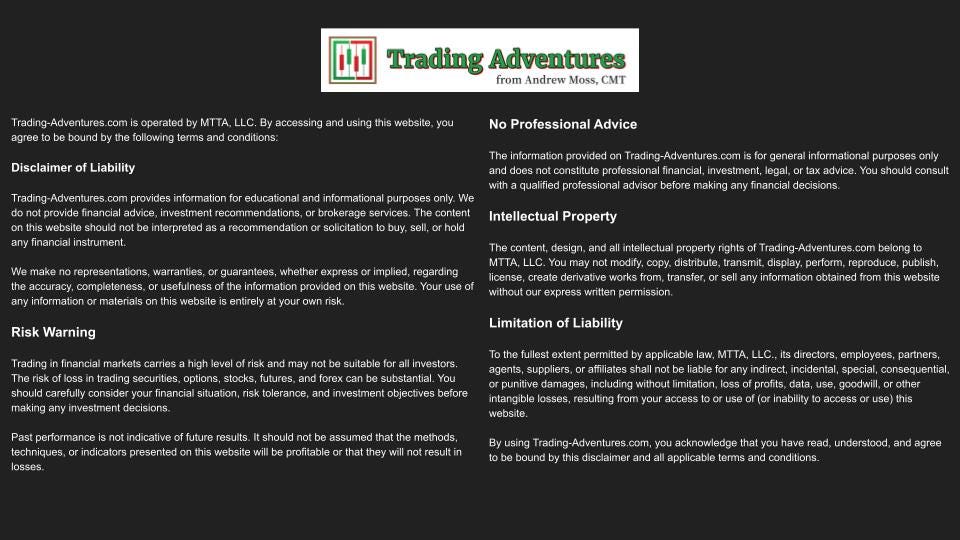Stops Are for Suckers
Why your stop orders get hit, what to do about it, and how to stop losing your mind.
Stops Are for Suckers
Let’s be honest—just hearing the title probably made your heart rate tick up a bit. You’ve either said it, shouted it, or muttered it to yourself while watching a stock rip higher without you right after stopping you out.
That’s maddening. Absolutely maddening.
And yet—it’s not uncommon. Every trader has a story like this.
The premature stop. The runaway winner. The haunting what-if.
It reinforces that all-too-familiar feeling that the market is “out to get you.” That some shadowy cabal of market makers, algos, and institutions are watching your stop order specifically and hunting it down with precision.
But let’s get real:
No one gives a f*** about your stop.
Seriously.
The market doesn’t care about you. It doesn’t know who you are. It’s not personal. It’s not rigged against you. It’s just… rigged to exploit obviousness.
And that’s the crux of it. Stops often hurt not because they exist, but because they’re obvious.
When price dips to a level where everyone and their brother has placed a stop… that level becomes a liquidity magnet. Smart money knows it. Some market makers might exploit it. But often it’s just the natural ebb and flow of supply and demand.
The stop gets hit. You’re out. The selling exhausts. Then it turns. And runs.
How Do We Eliminate the Frustration?
Before we get into the tactics, let me make this clear: these are not rules or recommendations. They’re just ideas—potential frameworks for you to test and evaluate for yourself.
Trading psychology is deeply personal. What works for one trader might be a total disaster for another. Finding the path of least regret means figuring out your own threshold for risk, emotion, and structure.
So I’m sharing what I’ve seen work—for myself and others.
Personally, tiering and scaling are the backbone of my trading process. I scale into positions, I scale out as trades move in my favor, and sometimes I stagger stop orders, using different levels for different parts of the trade. It helps me stay calm, manage risk without emotion, and stay in control of the trade’s lifecycle.
Trimming part of your position as price moves in your favor helps you settle into the trade. It reduces pressure. You feel less urgency to move your stop up too soon. You can let the rest breathe.
And if price pulls back? You’ve got options:
Re-enter the piece you trimmed
Let the trade play out without emotional swings
Manage the remaining stop with more clarity
This structure makes a huge difference in emotional control.
Another interesting twist I’ve come to appreciate: sometimes the stop level I’m considering is actually a great place to enter. That realization forces me to reassess:
Do I really want to enter here?
Would I rather wait for a better entry?
Is this a tier-one or tier-two setup?
It often reinforces the value of starting with a smaller position and leaving room to add. That flexibility creates breathing room in both the chart and your mind.
Revisiting After a Stop-Out
Sometimes, getting stopped out is a gift in disguise—a forced pause that gives you space to reassess the trade with a clearer head.
A sharp reversal immediately after a stop doesn’t always mean your idea was wrong. It might just mean your timing or risk parameters were off. You can always re-enter a trade—but only if the setup still makes sense and you do it deliberately.
This isn’t about chasing or getting back at the market. It’s about returning to the trade with a fresh perspective, better context, and a cleaner setup. If you do choose to re-enter, do it with intention, structure, and smaller size if needed. Treat it as a new trade, not a redo driven by emotion.
With that framing in mind, here’s a menu of tactical ideas to explore:
Tactical Ideas to Explore
Tactic #1: Give the Trade More Room
That perfect pivot on the chart? Everyone’s looking at it.
That clean support line? It’s on thousands of traders’ screens.
That rising 20-day MA? Obvious.
You’ve got to make your stop harder to reach.
Add an automatic buffer. Build in a cushion.
But here’s the key: If you give the trade more room, you must also reduce position size. That way, your risk remains controlled.
Wider stop → Smaller size
Tighter stop → Bigger size (with caution)
Most traders reverse this. They feel good about a trade, so they take a big position… and try to control the risk by placing a stop just beneath entry.
Mathematically, it’s defensible.
But emotionally? It’s a recipe for frustration.
Tactic #2: Tier Your Stops
Break your trade into pieces.
Set one tight stop for a small portion of the position
Set a mid-level stop for another chunk
Set a final stop at a deeper level, where you’re ready to be wrong
This keeps you engaged, gives you optionality, and reduces the all-or-nothing pressure that so often breaks traders.
This isn’t just about controlling risk. It’s about controlling your mindset.
Tactic #3: Don’t Use Mechanical Stops
For advanced traders only.
Skip the automated stop order. Use alerts instead. When price hits your zone, you manually re-evaluate.
Is it a real breakdown?
Was it a one-tick flush?
Is the structure still valid?
This gives you context. Flexibility. Time to think.
Caution: If you’re not highly disciplined, this can backfire. You’ll hesitate. Rationalize. Freeze. That’s why hard stops exist—to take you out before emotion clouds judgment.
But for the disciplined? This tactic gives space to stay in great trades—and dodge those stop-running wicks.
Tactic #4: Avoid Mechanical Stops Early in the Trading Day
Another strategy: Don’t use mechanical stop orders for the first 5, 15, or 30 minutes of the session.
How many times have you seen this?
The market gaps down at the open.
Your stop gets triggered on the flush.
The stock reverses sharply and runs to your original target.
That kind of move is infuriating. It’s also common.
Instead:
If you’re holding a long position into a gap-down open, pull the stop pre-market.
Watch the first 5–30 minutes for signs of stabilization.
Look for a pivot low and potential reversal.
If price reclaims that pivot, consider placing your stop beneath it.
This protects you from those wild open flushes—while still giving you structure for the rest of the session.
Again, caution applies. You must stay engaged and be ready to act.
Tactic #5: Use ATR-Based Stops
Instead of arbitrary levels, use Average True Range (ATR):
Place stops 1.5x ATR from your entry or key level.
Dynamically adjusts to volatility—wider in choppy markets, tighter in calm ones.
(Full disclosure: I don’t personally use this one, but it can work for others.)
It wasn’t about predicting the move — it was about being prepared and positioned when it mattered.
➤ Want alerts like this? t3live.com/et
Tactic #6: Trade Smaller, Scale In
If conviction is medium—not high—start small.
Build into the position as price confirms.
This gives the trade room and flexibility.
Risk stays manageable while clarity increases.
This works hand-in-hand with Tactic #2 and the earlier comments about tiering and scaling into and out of positions.
Tactic #7: Use Time-Based Stops
Exit not just on price—but on time:
If the trade hasn’t moved in your favor within X bars or days—exit.
Reduces dead money and frees capital for better setups.
(This one isn’t part of my process, but for some traders, especially swing or longer-term setups, it can be useful.)
Tactic #8: Use Structure Plus Confirmation
Don’t let one isolated price level dictate your exit. Context matters.
Instead of placing a hard stop just below a support level, look for confirmation:
A close below the level
A failed reclaim
A shift to lower highs
Breaks of key moving averages
VWAP or anchored VWAP failure or rejection
Elevated volume on breakdown
Using multiple signals adds depth to your decision-making and helps you avoid being shaken out by one errant move. It’s not about overcomplicating—it’s about improving signal quality.
I use this often. It keeps me grounded in structure, not noise.
Reframe Your Relationship with the Market
It’s not against you. It’s not for you. It just is.
The sooner you accept that, the sooner you free yourself from the frustration loop. You stop blaming the market. You start refining your edge.
Because trading isn’t about perfection, it’s about progress. And more often than not, it’s a game of least regret.
Getting stopped out too tight? Regret.
Holding too long without a stop? Regret.
Missing a trade because of fear from the last stop-out? Also regret.
You don’t eliminate regret. You manage it. You trade in a way that—win or lose—you can live with the decision you made.
Final Thought:
Stops aren’t for suckers.
But placing them without context, without strategy, and without respect for how markets move? That’s what makes suckers out of traders.
You deserve better than that.
Trade smart. Place stops with purpose. And keep playing the long game.
💵 This is a “pay-if-you-want” publication.
All content stays public. Nothing’s locked.
But if you’ve been enjoying the work and want to pitch in, a subscription is just $7/month or $84/year.
It helps keep the site running, the charts coming, and the quality high.
🙏 Support the work here → Become A Paid Supporter of Trading Adventures
Looking For More?
If this kind of trading mindset resonates with you, here are two places to keep learning:
EpicTrades Options Newsletter
Options-focused trade ideas from David Prince, Kira Barr, and me — with setups, sizing, and risk plans delivered in real time.
The Inner Circle
A private virtual trading floor (VTF) where I work and trade daily—alongside an elite crew of sharp, seasoned market pros.
Join us if you want to level up your trading with real-world, real-time execution insight.
The Disclosures
***This is NOT financial advice. This is NOT a recommendation to buy, sell, or trade any security. The content presented here is intended for educational purposes only.










Beauty!